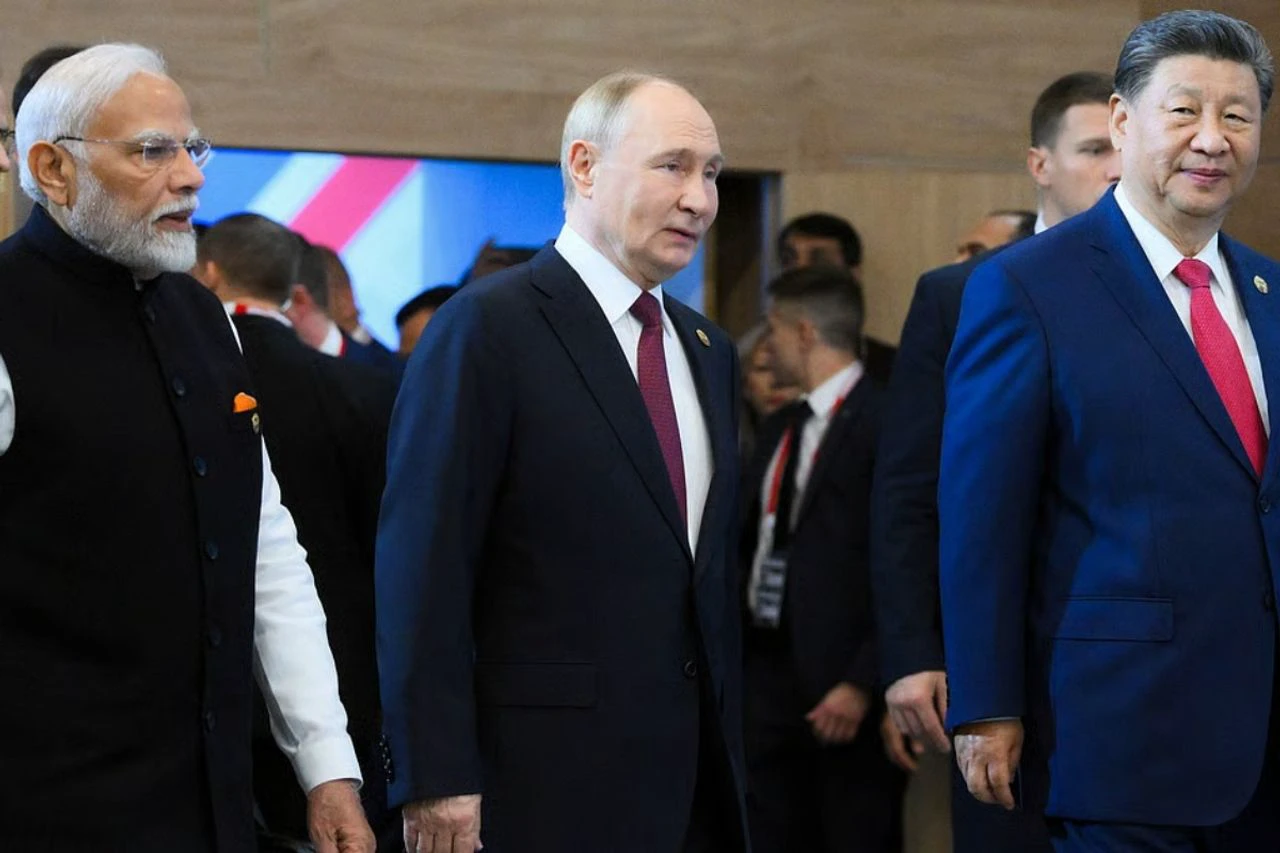Trilateral Bloc, a concept once shelved, is now gaining traction as China, India, and Russia have returned as a potential game-changer in diplomacy.
A powerful statement from Beijing has reignited discussions on shifting alliances and growing multipolarity. This emerging partnership could challenge Western dominance and reshape the global order.
As world leaders remain cautious, foreign policy circles are rushing with speculation. Is this a calculated move toward strategic realignment or the quiet rise of a new world order driven by the new Trilateral Bloc?
China’s Bold Declaration: “Ready to Advance Trilateral Ties”
China’s foreign ministry announced a major statement endorsing new cooperation with India and Russia. Furthermore, a social media post by Megh Updates highlighted this “BIG STATEMENT” of the Chinese Foreign Minister declaring, “China-Russia-India cooperation BENEFITS all three nations and is READY to work with India and Russia to advance trilateral ties.” This raised immediate questions about a New World order in the making…?
The statement did not come in isolation. China’s remarks followed recent diplomatic engagements involving Moscow and New Delhi. Beijing emphasized that the trilateral bloc could play a key role in maintaining regional balance, promoting peace, and ensuring development. The foreign ministry also pointed to shared concerns like energy security, trade connectivity, and counter-terrorism as areas of mutual interest.
Analysts see this as China’s attempt to counter US-led groupings such as the Quad and strengthen non-Western alliances in Asia. As China positions itself more assertively, the call for a new Trilateral Bloc seems more than symbolic.
The Trilateral Vision: What China, Russia, and India Stand to Gain?
The Russia-India-China grouping, first formed decades ago, aimed at balancing Western dominance. Moreover, analysts see the new push strengthening trade links, infrastructure projects, and energy cooperation. In addition, Russia hopes to expand markets for its hydrocarbons into Asia and Europe. Meanwhile, India could access affordable energy and defence technology from both partners.
Furthermore, China gains strategic leverage against Indo-Pacific alliances led by the US. As a result, each member stands to benefit from deeper regional integration. However, hurdles such as border tensions and sanctions risk slowing progress.
India’s Tightrope Walk: Strategic Autonomy in Focus
India must balance its relations with the United States, Israel, and Iran carefully. As the IMEC corridor emerges as India’s largest connectivity project, it counters China’s Belt and Road Initiative dramatically. Meanwhile, New Delhi navigates volatile Middle East tensions linked to US-Israel-Iran conflicts.
Moreover, India seeks to deepen ties with Gulf states and Europe without alienating either Washington or Tehran. Consequently, Delhi’s strategic autonomy remains its guiding principle. However, this balancing act tests India’s diplomatic skill amid competing security and economic interests. Ultimately, India’s choices will shape its global role.
A Challenge to the West? US and NATO on Alert
India recently cautioned the NATO chief against double standards over Russian sanctions. Furthermore, New Delhi signalled openness to restart RIC talks “in a mutually convenient manner”. During a press briefing, MEA spokesperson Randhir Jaiswal affirmed India’s position, stating, “India has always been supportive of dialogue-based multilateral formats. We are open to engaging in the RIC format in a mutually convenient manner.” Meanwhile, Moscow has actively negotiated with both capitals to revive trilateral discussions.
In addition, threatened possible secondary sanctions on any state trading with Russia. As a result, the US-led alliance now watches India’s moves closely. Moreover, Washington must weigh its interests in South Asia against Delhi’s independent stance. Ultimately, this dynamic tests Western unity and policy coherence.
New World Order in Motion: Is Multipolarity the Future?
India’s growing global role signals a shift toward a true multipolar world order. Moreover, commentators note that Delhi bridges the Global South and Western powers effectively. As a result, India prepares to chair BRICS in 2026, shaping agendas around sustainability and equity.
Additionally, its foreign minister advocates revising biased rules-based institutions to reflect today’s realities. Meanwhile, New Delhi deepens strategic ties with Germany, Japan, and other stabilisers. Consequently, multipolar Asia could anchor a balanced global framework. Ultimately, this trend may redefine power structures for decades.
The world stands at a crossroads as the new Trilateral Bloc challenges old alliances and prompts new strategic calculations.
